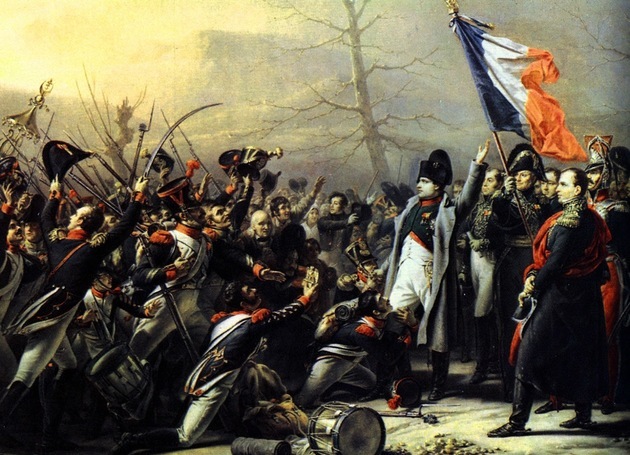At abolitionist laws as we know the laws passed in the period between 1850 and 1888, which is the transition period of the end of the slave trade up to abolition of slavery with the approval of the Lei Áurea, on May 13, 1888. These laws marked some changes in the issue of slavery in Brazil and were passed to meet the interests of slaveholders to carry out a gradual transition to abolition.
Also access: See some of the influence of African culture on Brazilian culture
What were the abolitionist laws?
The two abolitionist laws passed during this period were:
Free Womb Law (1871)
Sexagenarian Law (1885)
Historical context
Abolitionist laws were passed in the context of post-prohibition of the slave trade that happened from the Eusébio de Queirós Law, in 1850. The approval of this law was due to pressure carried out by England on Brazil for the definitive prohibition of the slave trade. For this, the English used a law known as Bill Aberdeen.
The Bill Aberdeen passed the English Parliament in 1845 and allowed naval vessels to to imprison slave ships that transited the Atlantic, including the territorial waters of the Brazil. Bill Aberdeen forced Brazil to pass a definitive ban on trafficking as a way to safeguard national sovereignty and prevent a war against the British.
With the approval of the Eusébio de Queirós Law, the slave trade was effectively fought in Brazil and this is evidenced by the small number of Africans who landed in the country between 1851 and 1856. Brazilian politics in the 1850s was guided by issues related to the effective application of the prohibition of trafficking.
After the issues relating to the Eusébio de Queirós Law had passed, the first issues relating to definitive abolition began to be debated. In the 1860s, only Brazil, Puerto Rico and Cuba (Spanish colonies) still maintained slave labor and this, combined with slave revolts and the fear of Haitian example, made many support that a transition through the law should take place.
The application of abolitionist laws would make a gradual transition, as desired by the Brazilian economic elites, always interested in extending slavery as much as possible. Many, however, opposed this type of law, arguing that pro-abolition legislation would encourage slaves to rebel. The debate on the first abolitionist law – Lei do Ventre Livre – was born in the 1860s.
law of the free womb
The Free Womb Law was approved on the day September 28, 1871 and determined that the children of slaves born in Brazil, from 1871 onwards, would be considered free. The law, however, had conditions for this freedom to be granted:
The children of slaves could be freed with 8 years and his owner would receive a indemnity of 600 milreis, or;
The children of slaves could be freed with 21 years in which case the slave master would receive no compensation.
The debate on this law was born at the request of the emperor d. Pedro II who asked a Conservative Party politician in 1865 to carry out a study of slave emancipation. This politician called José Antônio Pimenta Bueno organized a law that promoted the liberation of the children of slaves, but this proposal did not advance because of the Paraguay War.
After the end of the war, a similar proposal was put forward by the cabinet chaired by the Viscount of Rio Branco. The idea of this law presented by the Viscount, as mentioned, was to make a transition to abolition by law and not by revolution, as had happened in Haiti (which had its independence from a slave revolt), at the turn of the 18th century to the XIX.
Many slavers feared that the law would encourage slave rebellion and did not like the law because it did not propose payment of compensation. The solution found was to propose compensation for the masters in the way mentioned (compensation for those who freed their child from slaves at the age of 8).
The Law of the Free Womb imposed that a national registry and every slave master was obliged to register his slaves in this document. The slave who was not registered would be considered legally free and so the burden of proving the slave's status passed now to his master. The creation of this registry allowed the legalization of slaves that were illegally landed in the country, from 1831 onwards.
Abolitionists also did not like this law, as they advocated an unrestricted and immediate abolition, so they were dissatisfied, mainly because it contributed to weaken the abolitionist debate in the country. The law, in turn, allowed lawyers to act intensely in the laws in search of irregularities committed by slave owners.
Also access: Learn a little about the life trajectory of the princess who signed the Golden Law
Sexagenarian Law
The Sexagenarian Law was a response from conservative groups that worked for the maintenance of slavery in Brazil. That's because in the 1880s, the abolitionism gained considerable strength across the country and had reached distinct social classes. Thus, this conservative reaction was a reflection of the abolitionist strengthening in the country.
Conservative and slavocratic groups began to act to curb the advance of abolitionism in the country and one of the measures taken by them was the Sexagenarian Law, also known as Saraiva-Cotegipe Law, approved on September 28, 1885.
This law decreed that all slaves aged 60 years and over would be freed after performing a period of indemnity work of three years. A slave who was freed under this law, however, was obliged to settle in the city in which he was freed for at least five years.This law was considered a delay in the advance of abolitionism, because its sole objective was to stop the advance of the abolitionist movement.
The goal of conservatives and slaveholders to delay the advance of abolitionism was unsuccessful, as, little more than two years later, the Golden Law was approved and slavery was prohibited in Brazil.


